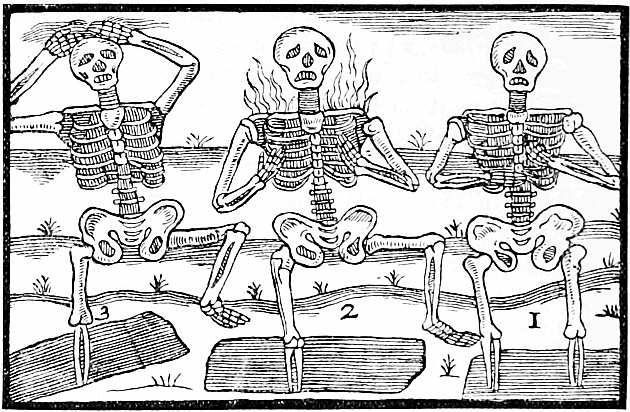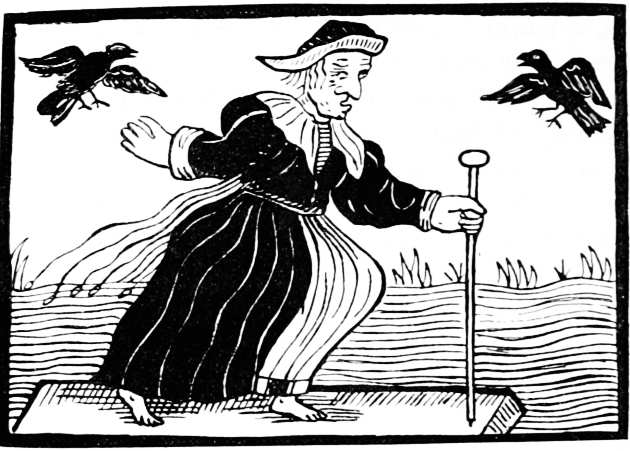THE PICTORIAL PRESS ITS ORIGIN AND PROGRESS.
BY MASON JACKSON.
With One Hundred and Fifty Illustrations.
LONDON: HURST AND BLACKETT. PUBLISHERS.
13 GREAT MARLBOROUGH STREET.
1885.
view online here
BY MASON JACKSON.
With One Hundred and Fifty Illustrations.
LONDON: HURST AND BLACKETT. PUBLISHERS.
13 GREAT MARLBOROUGH STREET.
1885.
view online here
http://www.gutenberg.org/files/36417/36417-h/36417-h.htm

GREAT FLOOD IN MONMOUTHSHIRE, 1607
"When the printing-press came into use this love of pictures had a wide field for development. Some of the first 2 books printed in England were illustrated with woodcuts, and many of the tracts, or ‘News-books,’ which preceded regular newspapers, were adorned with rude engravings. It mattered not how graphic was the pen, its work was deemed incomplete without the aid of the pencil. It often happened that the pen was none the better for the fellowship, but the public taste was not fastidious, and the work sufficed for the occasion. In tracing the origin and progress of pictorial journalism we shall find in ‘the abstracts and brief chronicles of the time’ many curious illustrations of contemporary history. The subject is not without interest now that the illustrated newspaper has become a prominent feature in the journalism of every country.
The development of the newspaper press and its unrestricted use as the exponent of public opinion is one of the most interesting signs of modern progress."

MIRACULOUS NEWS FROM MUNSTER IN GERMANY, 1616.

THE NEWBURY WITCH, 1643
Chapter IX describes 'How an Illustrated Newspaper is Produced'
"The art of wood-engraving, to which the illustrated newspaper owes its existence, has been fully described by competent authors. The best work on the subject is that produced by the late John Jackson in 1839; but since that date the resources of the art have been greatly developed, chiefly through the influence of illustrated newspapers."

CAMP OF THE ‘TIMES’ AND ‘ILLUSTRATED LONDON NEWS’' CORRESPONDENTS ATTACKED BY WOLVES. BULGARIA, 1877.
The section on the difficulties of war correspondent artists is particularly interesting.
"When the great war of 1870, between France and Prussia, broke out, the illustrated newspapers had special artists on both sides, who encountered all sorts of hardships, and passed through all kinds of adventures in fulfilling their duties. Besides being frequently arrested as spies, and undergoing the privations of beleagured places, they had also to run the risk of shot and shell, and sometimes they were obliged to destroy their sketching materials under fear of arrest. One of them was in custody as a spy no less than eleven times during the war. The danger of being seen sketching or found with sketches in their possession was so great that on one occasion a special artist actually swallowed his sketch to avoid being taken up as a spy. Another purchased the largest book of cigarette papers he could obtain, and on them he made little sketches, prepared in case of danger to smoke them in the faces of his enemies."
Chapter X covers other methods of producing illustrations.
"The pictorial press has hitherto been mainly dependent on the art of wood-engraving for its illustrations, but latterly several inventions have been used, not unsuccessfully, in the production of blocks in relief, to be printed in the same manner as woodcuts. The great improvements that have been made in surface printing render it probable that in the future these process blocks may be extensively used in illustrated newspapers. They are recommended by their cheapness and rapid production; and as the intermediate process of engraving is dispensed with, they retain the exact touch of the artist, and are not liable to be mutilated by careless or hasty engraving. It may be said of all these inventions, however, that they are best suited for slight sketches, and should not be applied to the production of highly-finished subjects. For the latter there is nothing better than a woodcut, which, when well executed and carefully printed, has a richness superior to any other method of engraving. But in the present day competition is so great and the march of events is so rapid that cheapness and rapidity of production will override artistic excellence, and process-engraving, as it is called, will probably be the method adopted for the daily pictorial press, the era of which is approaching."

GREAT FLOOD IN MONMOUTHSHIRE, 1607
"When the printing-press came into use this love of pictures had a wide field for development. Some of the first 2 books printed in England were illustrated with woodcuts, and many of the tracts, or ‘News-books,’ which preceded regular newspapers, were adorned with rude engravings. It mattered not how graphic was the pen, its work was deemed incomplete without the aid of the pencil. It often happened that the pen was none the better for the fellowship, but the public taste was not fastidious, and the work sufficed for the occasion. In tracing the origin and progress of pictorial journalism we shall find in ‘the abstracts and brief chronicles of the time’ many curious illustrations of contemporary history. The subject is not without interest now that the illustrated newspaper has become a prominent feature in the journalism of every country.
The development of the newspaper press and its unrestricted use as the exponent of public opinion is one of the most interesting signs of modern progress."

MIRACULOUS NEWS FROM MUNSTER IN GERMANY, 1616.

THE NEWBURY WITCH, 1643
Chapter IX describes 'How an Illustrated Newspaper is Produced'
"The art of wood-engraving, to which the illustrated newspaper owes its existence, has been fully described by competent authors. The best work on the subject is that produced by the late John Jackson in 1839; but since that date the resources of the art have been greatly developed, chiefly through the influence of illustrated newspapers."

CAMP OF THE ‘TIMES’ AND ‘ILLUSTRATED LONDON NEWS’' CORRESPONDENTS ATTACKED BY WOLVES. BULGARIA, 1877.
The section on the difficulties of war correspondent artists is particularly interesting.
"When the great war of 1870, between France and Prussia, broke out, the illustrated newspapers had special artists on both sides, who encountered all sorts of hardships, and passed through all kinds of adventures in fulfilling their duties. Besides being frequently arrested as spies, and undergoing the privations of beleagured places, they had also to run the risk of shot and shell, and sometimes they were obliged to destroy their sketching materials under fear of arrest. One of them was in custody as a spy no less than eleven times during the war. The danger of being seen sketching or found with sketches in their possession was so great that on one occasion a special artist actually swallowed his sketch to avoid being taken up as a spy. Another purchased the largest book of cigarette papers he could obtain, and on them he made little sketches, prepared in case of danger to smoke them in the faces of his enemies."
Chapter X covers other methods of producing illustrations.
"The pictorial press has hitherto been mainly dependent on the art of wood-engraving for its illustrations, but latterly several inventions have been used, not unsuccessfully, in the production of blocks in relief, to be printed in the same manner as woodcuts. The great improvements that have been made in surface printing render it probable that in the future these process blocks may be extensively used in illustrated newspapers. They are recommended by their cheapness and rapid production; and as the intermediate process of engraving is dispensed with, they retain the exact touch of the artist, and are not liable to be mutilated by careless or hasty engraving. It may be said of all these inventions, however, that they are best suited for slight sketches, and should not be applied to the production of highly-finished subjects. For the latter there is nothing better than a woodcut, which, when well executed and carefully printed, has a richness superior to any other method of engraving. But in the present day competition is so great and the march of events is so rapid that cheapness and rapidity of production will override artistic excellence, and process-engraving, as it is called, will probably be the method adopted for the daily pictorial press, the era of which is approaching."












